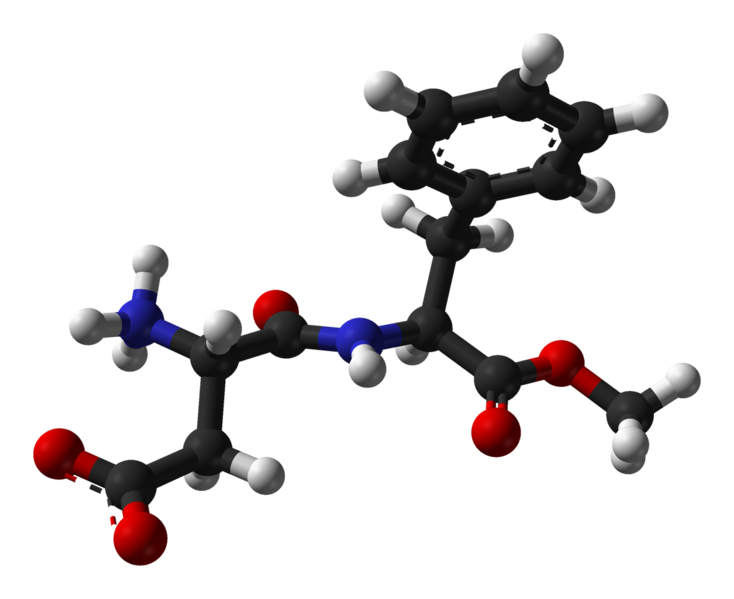Aspartame is an artificial dipeptide sweetener, which is synthesized from L-phenylalanine and aspartic acid, and its scientific name is L-aspartic acid-L-phenylalanine methyl ester. It is a white crystalline powder that can be hydrolyzed into aspartic acid and phenylalanine in the body acid, methanol. Aspartame, as an important sweetener, is widely used in pharmaceutical processing and food processing, and its safety is very important. However, there are safety hazards such as carcinogenicity, low immunity, and brain tumor induction in the use of aspartame. Although aspartame on the market have been replaced by other relatively safe sweeteners such as fructose syrup, its application is still very wide, especially if it is used in excess, it may affect people’s lives. This article reviews the carcinogenicity, neurotoxicity and other toxic effects of aspartame, as well as the factors affecting its synthesis.
The Nature of aspartame
Aspartame is commonly known as aspartame, chemical formula is C14H18N2O5, is present in the state of white powder at room temperature, is a natural functional low polysaccharide, high sweetness, not easy to moisten, does not cause tooth decay, can be eaten by diabetics. Because of its extremely low calorie and high sweetness, aspartame can be added to beverages, pharmaceuticals or sugar-free gum as a sugar substitute. 1 g of aspartame can release approximately 4,186 kJ/kg of calories, and 2.8 mg/dl of aspartame can make you feel sweet, so you can ignore the small amount of caloricity produced by asparagraph.
Stability of Aspartame
Aspartame is unstable and water-soluble at high temperatures or higher pH values, so it is not suitable for high-temperature foods. Aspartame has a half-life of up to 300 d, and is most stable in environments with a pH of 3-5; when pH is 7, it has only a few days. The sweetness properties of aspartame are different from the sugar, the sweetness of the sugar is more lasting, and there will be no bitter after-smell or metal odor after consumption, and aspartame in the human body can be rapidly metabolized into amino acids, benzoate and methyl esters, methane content is extremely low, metabolism is fast, can be quickly absorbed by the body, it is not easy to detect.
The Toxicity of Aspartame
Figure 1. Ball-and-stick model of aspartame.
Between the 1970s and the 1990s, the incidence of cerebrovascular tumors in the U.S. population increased significantly, and scholars have concluded that aspartame will increase the incidence of brain tumors through American epidemiological data, believing that the significant increase in the prevalence of the American population of the brain tumor is directly related to the US FDA approval of Aspartame into the market. This conclusion has been challenged by many scientists, with researchers conducting case-controlled studies of brain tumor patients and normal populations, finding that aspartame is not related to the incidence of cerebral tumors. After aspartame entered the market in France, researchers analyzed the prevalence of brain tumors in the population between 1980 and 1997 and found no tendency to lead to an increase in brain tumours. Renwick and others collected cases and analysed various data between 1991 and 2004 to find that aspartame intake was positively correlated with the incidence of brain cancer. But this conclusion was later denied by the U.S. FDA, and on April 20, 2007, the FDA issued the opinion that aspartame is not long-term carcinogenic, and people are safe to consume aspartame for a long time. The World Health Organization’s Joint Committee of Experts on Food Additives (JECFA) and the European Food Safety Authority (EFSA) assessed the safety of aspartame using animal experiments to conclude that the daily intake of 2.4 g of aspirin in healthy people weighing about 60 kg does not cause cancer. However, recent reports have revealed that aspartame will be declared “potentially carcinogenic” by the World Health Organization’s International Agency for Research on Cancer (IARC) in July.
Neurotoxicity
In addition, research focuses on the neurotoxic effects of aspartame. One of the metabolic products of aspartame, benzodiazepine, can compete with the neutral amino acids of other large molecules when passing through the blood-brain barrier, changing the original amino acid ratio in the brain, thus interfering with the transmission of neurotransmitters. A randomized, double-blind placebo-controlled trial of clinical patients, such as Koehler, found that aspartame intake may increase the incidence of migraines or prolong the duration of the pain.
As one of the artificial synthetic sweeteners, aspartame, due to its high sweetness, low calorie content, not easy to cause tooth decay and other characteristics, has become the best sugar substitute for special nutritional consumer groups such as diabetics, obese people and older people.However, aspartame is about to be declared as “potentially carcinogenic” by the World Health Organization’s International Agency for Research on Cancer (IARC). Whether it can ultimately continue to be used as a food additive remains to be announced by the final results.

